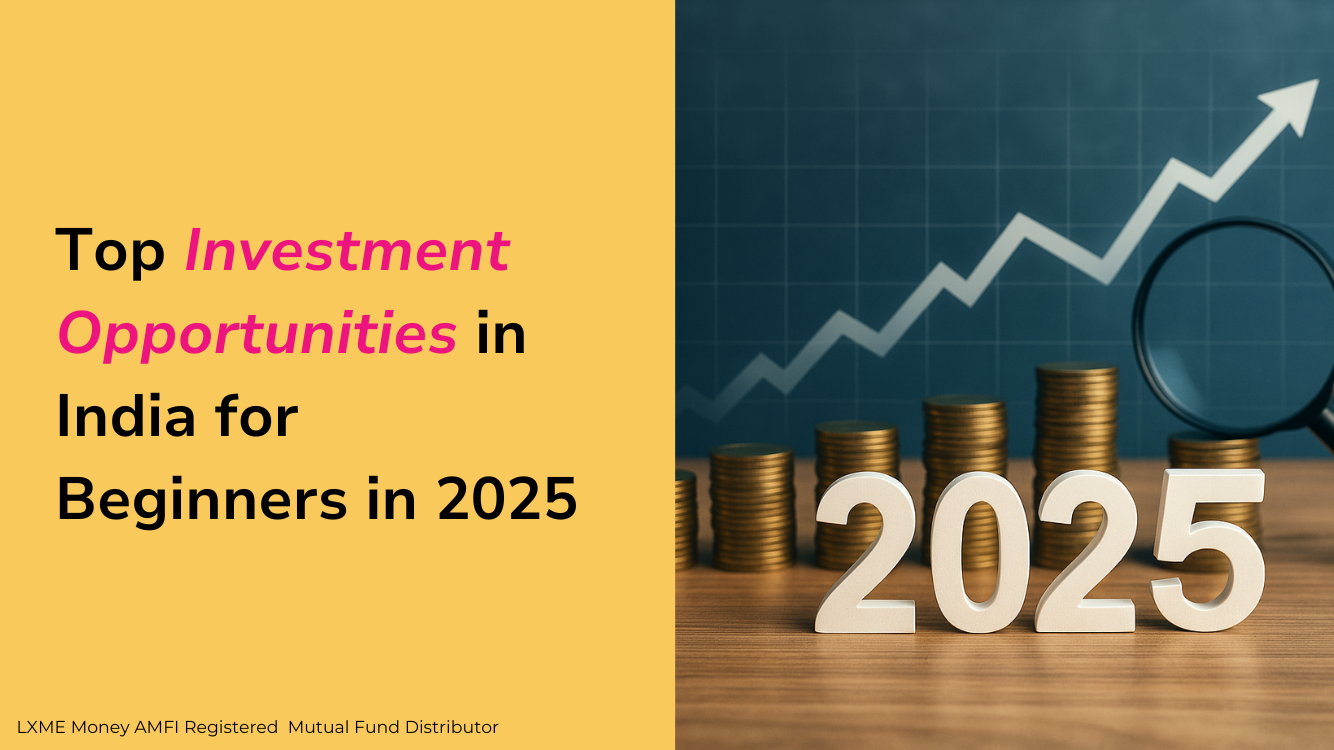India’s economy is booming with digitization, financial inclusion, and a surge in investment. But for a beginner, the big question remains, “Where do I start?”
Good news: In 2025, there is a range of investment opportunities in India for beginners where you can start investing and fulfill your long-term or short-term goals. But first, let’s break down the investment time frames based on which you can invest money online and start working towards your goals.
What are the different types of goals?
There are 3 types of goals as follows,
1. Ultra-Short Term Goal: If you have any goals that are within 1 month to 12 months, i.e., up to 1 year, then it is known as ultra-short-term goals. For example: If you want to buy an iPhone within 6 months or want to buy a washing machine in 3 months, etc.
B. Short-Term Goal: If you have any goals that are within 1 year to 3 years, then it is known as a short-term goal. For example: if you want to go on a vacation after 1 year or you want to buy a car after 2 years, etc.
C. Long-Term Goal: If you have any goals that are after 3 years, then it is known as long-term goals. For example, if you want to plan for your child’s higher education, retirement, etc.
What are the Best Investment Opportunities in India?
1. Mutual Funds: A Mutual Fund pools money from various investors and puts these funds into different assets such as equity, debt, gold, etc., depending on the specific scheme chosen by the investor. It is professionally managed and monitored by a fund manager whose goal is to generate returns for the investors. There are various types of mutual funds, however, the main 3 types are:
A. Equity Mutual Funds: Equity funds invest your money in company stocks/ shares. They carry some risk but can grow your wealth over time and beat inflation. Returns depend on the stock market. Suitable for long-term goals.
B. Debt Mutual Fund: These funds invest in fixed-income instruments like bonds and money market securities. They’re suitable for short-term goals and form a key part of your overall investment plan by helping you benefit from compounding. Since they’re market-linked, returns may vary depending on performance.
C. Gold Mutual Funds: Gold Mutual Funds invest in gold and gold-related assets like Gold ETFs. They help protect against inflation and market risks, making them a smart way to invest in gold. Suitable for long-term goals.
You can check out Lxme’s Equity, Debt & Gold Mutual Fund portfolios, which are well-researched, diversified, and curated by experts. You can start investing in these asset classes with as little as just Rs.100.
You can also check out investment plans for women
2. Public Provident Fund (PPF): PPF is a government-backed savings scheme open to Resident Indians. It offers a fixed interest rate, currently at 7.1% p.a., which is compounded annually, and it’s revised every quarter by the government. PPF has a maturity period of 15 years, providing a secure investment option for long-term savings. However, it cannot beat inflation over the long term. Offers tax benefit under Section 80C up to the limit of ₹1.5 Lakh under the old tax regime.
3. National Pension System (NPS): NPS is a government-backed retirement savings scheme open to all Indian citizens aged 18–70. It offers market-linked returns by investing in a mix of equity, corporate debt, and government bonds. You can choose your asset allocation or let it be auto-managed. The scheme matures at 60, with part of the corpus withdrawn lump sum and the rest used to buy an annuity for a regular pension. It’s ideal for long-term retirement planning. NPS offers tax benefits under Section 80C and an additional ₹50,000 under Section 80CCD(1B) in the old tax regime.
4. National Savings Certificate (NSC): The National Savings Certificate (NSC) is a savings option by the government that is backed by a fixed-income investment scheme offered by India Post. These certificates earn fixed interest to provide stable and long-term income. The prevailing interest rate is 7.7% p.a. compounded annually, however, it cannot beat inflation over the long term. This scheme is suitable for the long term and also offers tax benefits under Section 80C up to the limit of ₹1.5 Lakh under the old tax regime.
5. Fixed Deposits (FDs): Fixed deposits are the choice of most women. You can put some proportion of your money in an FD for as short as 7 days and 10 years, depending on your needs. It offers fixed returns and is low-risk. Plus, if you ever need your money, you can break the FD early (with a small penalty). These are suitable for ultra short term, short term, and long term, based on which type of FD you choose.
6. Recurring Deposits (RDs): Recurring deposits allow you to invest a fixed amount every month, making them perfect if you want to build up a short-term fund over time. You can choose an RD period from 6 months to a year or more, and since it’s low-risk, your money grows steadily with a fixed interest rate. Suitable for ultra short term, short term, and long term, based on what tenure you choose.
Don’t wait for the “perfect time” to invest, as now you know good investment opportunities, start with what you have, where you are. Understanding your risk appetite and investment horizon is your compass.
From Mutual funds to RDs, India in 2025 is full of investment opportunities tailored for first-time investors.
You can also check out the rights of women in India
Bookmark this blog for your future reference.
Comment “Yay Investing” if you have already started investing.
FAQs
What are the best investment options for beginners?
The best investment options for beginners include mutual funds, PPF, FDs, NPS, NSC, and RDs. These options are easy to start with, offer a mix of safety and returns, and suit different financial goals and time horizons. Choose based on your risk comfort and how long you want to stay invested.
Are mutual funds suitable for first-time investors?
Yes absolutely! Mutual funds are suitable for first-time investors. They are easy to start, professionally managed, offer diversification, and you can start investing with as little as ₹100. They’re smart and the best way to begin your investment journey.
Further read:












